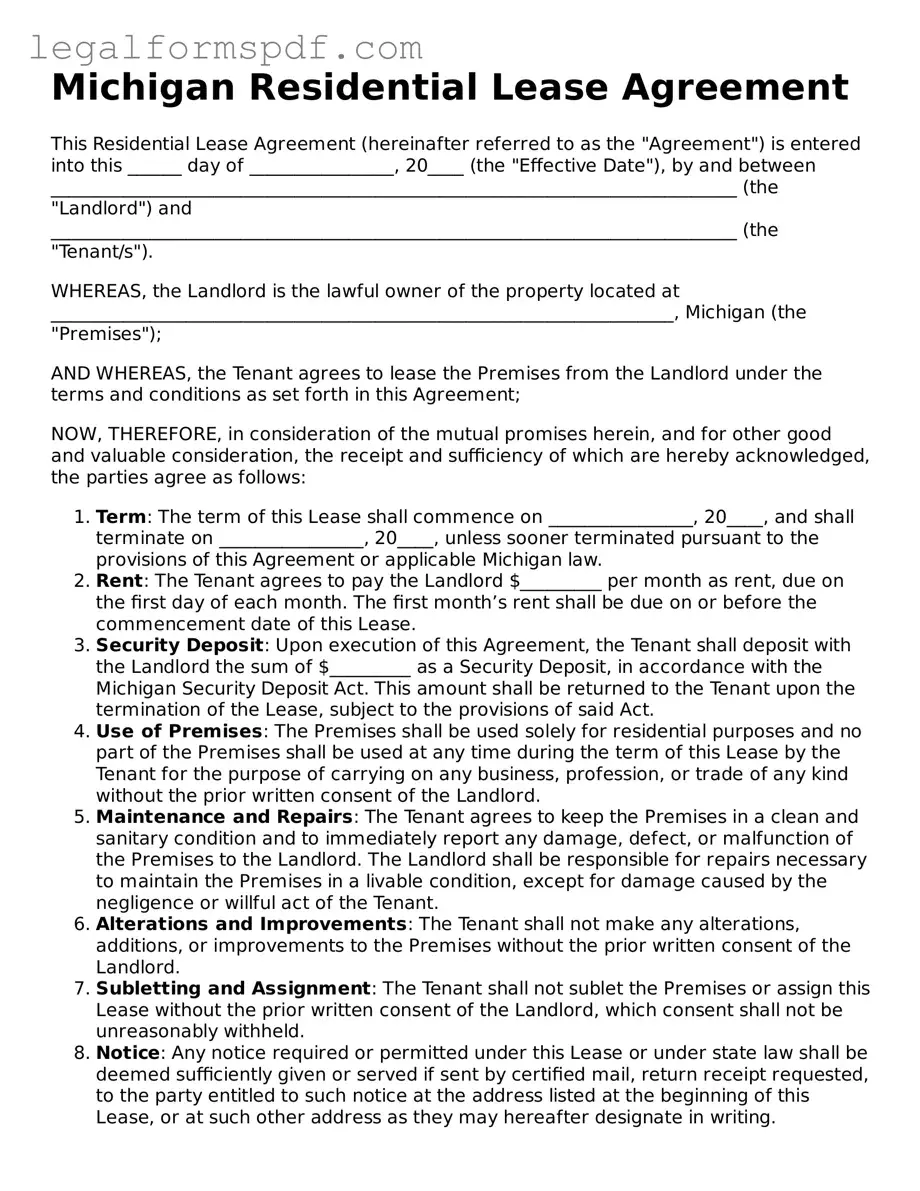What is a Michigan Residential Lease Agreement?
A Michigan Residential Lease Agreement is a legal document outlining the terms and conditions under which a rental property is leased by the landlord to a tenant in Michigan. It specifies the rights and obligations of both parties regarding the rental of residential property.
Who needs a Michigan Residential Lease Agreement?
Any landlord planning to rent out a residential property in Michigan and any individual or group of individuals looking to rent a residential property in Michigan need a Michigan Residential Lease Agreement. It serves to protect the interests of both parties.
What are the key components of a Michigan Residential Lease Agreement?
The key components typically include the duration of the lease, monthly rent amount, security deposit details, conditions regarding the use of the property, maintenance responsibilities, and clauses related to renewal or termination of the lease. It also covers policies on late fees, pets, and subletting.
Is a written Lease Agreement required in Michigan?
Yes, while verbal agreements can be legally binding, a written Lease Agreement is strongly recommended. It provides a clear record of all terms agreed upon by the parties and can be indispensable in resolving disputes or misunderstandings.
How long can a Residential Lease Agreement last in Michigan?
The duration of a Residential Lease Agreement in Michigan can vary. Common lease terms are one year, but leases can be structured for different lengths of time, including month-to-month arrangements.
What happens if a tenant breaks a Lease Agreement in Michigan?
If a tenant breaks a Lease Agreement in Michigan, the landlord may have the right to pursue legal action to recover lost rent, costs associated with re-renting the property, and any other damages incurred. The specific recourse available to the landlord depends on the terms of the lease and state law.
Can a landlord increase the rent during the lease period in Michigan?
A landlord cannot increase the rent during the fixed term of a lease agreement unless the agreement itself specifically allows for rent increases. In month-to-month tenancies, the landlord can raise the rent by providing proper notice as required by Michigan law.
How much notice is required to terminate a Residential Lease Agreement in Michigan?
The required notice period to terminate a Residential Lease Agreement in Michigan typically depends on the type of agreement. For month-to-month tenancies, a 30-day notice is generally required. The lease itself may specify notice requirements for terminating a fixed-term lease.
Are security deposits required and regulated in Michigan?
Yes, security deposits are commonly required and are regulated in Michigan. State law outlines specific rules regarding the maximum amount of a security deposit, how it must be stored, and the timeline and conditions for returning it to the tenant at the end of the lease.
How does a tenant request repairs under a Michigan Residential Lease Agreement?
Tenants should request repairs in writing, providing a reasonable description of the issue and a reasonable timeframe for the repairs to be completed. Landlords are required to maintain the property in habitable condition, and failing to address necessary repairs in a timely manner can violate state laws and lease terms.
